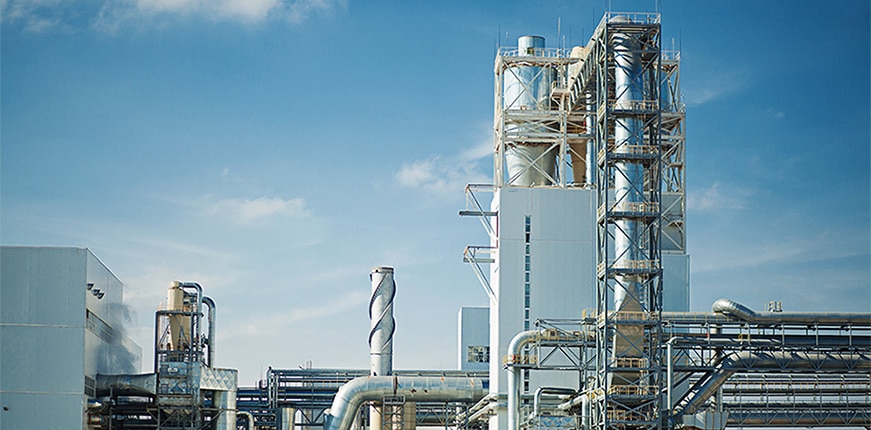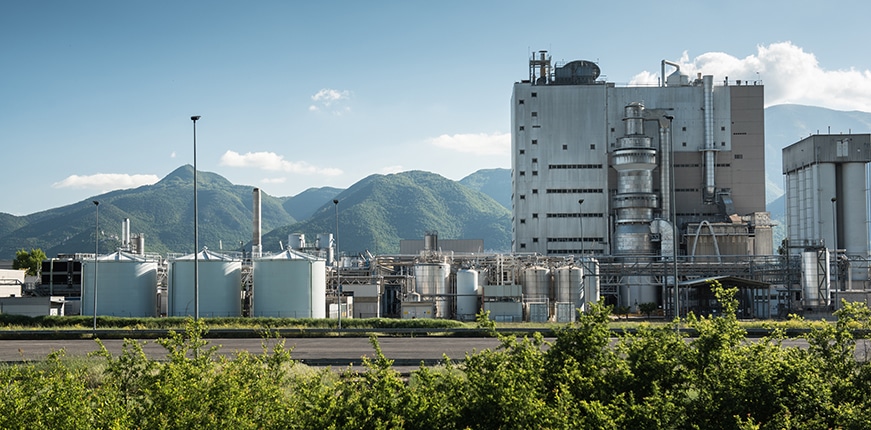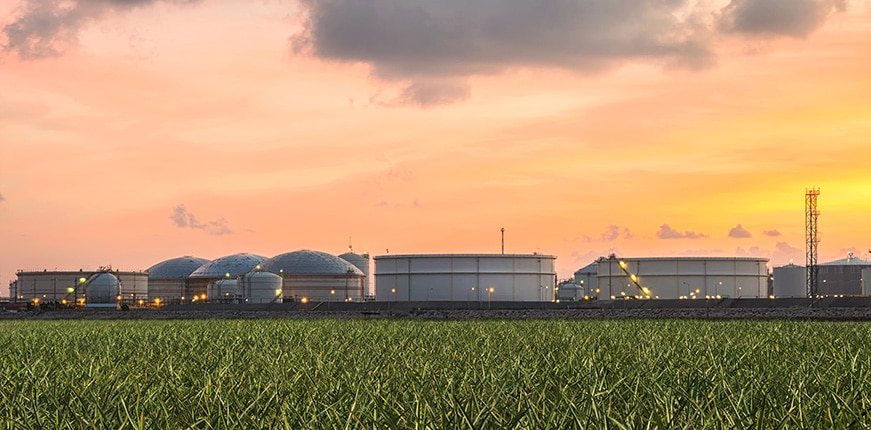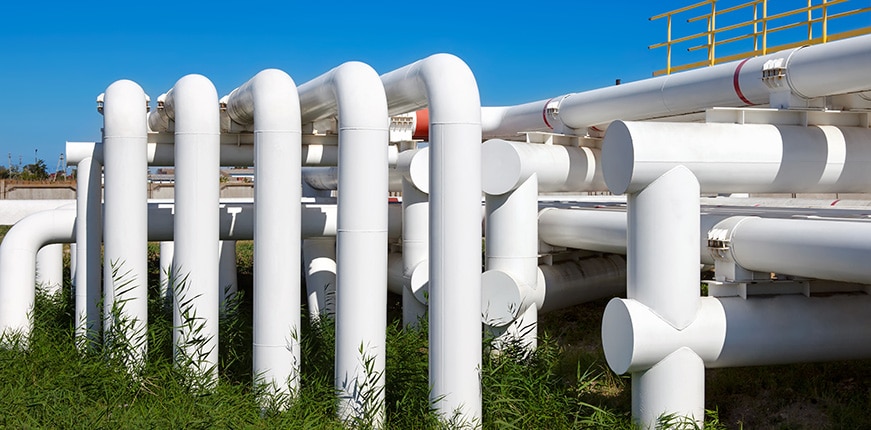On November 28, 2016, EPA issued the final Hazardous Waste Generator Improvements Rule (HWGIR), which includes updates and revisions to hazardous waste and associated regulations promulgated at 40 CFR 257 – 279. The majority of the modifications that impact hazardous waste generators, including waste classification, generator category determination, and waste management, are located at 40 CFR 260 – 262. States that are authorized by EPA to implement the Resource Conservation and Recovery Act (RCRA) are required to adopt those Federal provisions that are more stringent than the states’ current RCRA generator regulations in order to retain their authorized status.
The below list summarizes the states with RCRA-authorization in which the EPA HWGIR is in effect as of July 24, 2019, and examples of regulatory citations and associated requirements that are more stringent than EPA’s regulations.
Contact VBA Compliance Assurance if you need assistance with hazardous waste compliance.
Alabama Department of Environmental Management (ADEM), 4/6/2018
- ADEM Admin. Code r. 335-14-3-.08 – Waste destined for disposal in a commercial hazardous waste disposal facility located in the State of Alabama must have prior approval for disposal.
- ADEM Admin. Code r. 335-14-3-.01(4)(d) – Very small quantity generators (VSQG) that have voluntarily obtained an EPA ID number are required to submit ADEM Form 8700-12 annually or deactivate the number by formally notifying the Department.
- ADEM Admin. Code r. 335-14-3-.01(6)(b)2.(iv) and (7)(a)1.(v) – All small quantity generators (SQGs) and large quantity generators (LQGs) must record inspections in an inspection log or summary that includes minimum required elements and are kept for three years from date of inspection.
- ADEM Admin. Code r. 335-14-3-.01(6)(b)10. – Requires specific, documented hazardous waste training for SQGs.
- ADEM Admin. Code r. 335-14-3-.01(7)(a)1.(iv) – Containers having a capacity greater than 30 gallons must not be stacked over two containers high.
- ADEM Admin. Code r. 335-14-3-.01(7)(a)10. – Requires specific site security measures to prevent unknowing and unauthorized entry of persons or livestock into the central accumulation area.
- ADEM Admin. Code r. 335-14-3-.01(8)(d) – Requires SQGs, LQGs, and VSQGs that optionally obtain an EPA ID number to file annual ADEM Form 8700-12 report and fees (including all appropriate attachment pages and fees) reflecting current waste activities to the Department annually.
Arizona Department of Environmental Quality (ADEQ), 3/1/2019
- R18-8-262.F(C) – Requires reporting to the NRC and ADEQ when a spill has discharged into a storm sewer or dry well, or such an event has resulted in any other discharge that may reach groundwater.
- R18-8-262.G – Hazardous waste inspections must be documented in a written log that is maintained for three years from the date of the inspection.
Colorado Department of Public Health and Environment (CDPHE), 6/30/2018
- 6 CCR 1007-3-262.9 – Requires payment of annual fees to CDPHE.
- 6 CCR 1007-3-262.13(f)(1)(iii) and (iv) – Specifies that characteristic hazardous waste generated by a VSQG and mixed with the VSQG-generated used oil is a hazardous waste if the resulting mixture exhibits any hazardous waste characteristic, and that mixtures of used oil and listed hazardous waste generated by a VSQG must be managed as hazardous waste. The VSQG must count both the resultant mixture amount plus all other hazardous waste generated in the calendar month to determine whether the total quantity exceeds the VSQG calendar month quantity limits.
- 6 CCR 1007-3-262.14(d) – Requires VSQGs to comply with the same requirements as SQGs for maintaining and operating the facility to minimize the possibility of a fire, explosion, or any unplanned sudden or non-sudden release of hazardous waste or hazardous waste constituents.
- 6 CCR 1007-3-262.15(a)(4) – Allows the temporary venting of a container holding hazardous waste only on a case-by-case basis with prior written approval from the Department.
- 6 CCR 1007-3-262.15(a)(6) – Requires satellite accumulation areas to comply with the requirements of central accumulation areas within 24 hours of exceeding the allowed satellite accumulation area thresholds.
- 6 CCR 1007-3-262.15(a)(9) – Requires all satellite accumulation areas operated by SQGs or LQGs to be inspected at least weekly.
- 6 CCR 1007-3-262.15(a)(10) – Requires hazardous waste training of employees in order to utilize the satellite accumulation area exemption.
- 6 CCR 1007-3-262.16(b)(2)(iv) and 262.17(a)(1)(v) – Includes specific inspection requirements and elements to be inspected for all hazardous waste storage areas.
- 6 CCR 1007-3-262.16(b)(9) – Requires documented training for employees of SQGs.
Florida Department of Environmental Protection (FDEP), 6/18/2018
- FAC 62-730.030(2) – Requires VSQGs to document delivery of hazardous waste through written receipts and other records maintained for at least three years.
- FAC 62-730.030(3) – VSQGs must maintain documentation of any hazardous waste claimed to be exempt from regulation because it was generated by or disposed of by a VSQG, including written records detailing the quantities of HW generated by the VSQG, and the method and location of disposal of such hazardous waste.
- FAC 62-701.300(4) – Hazardous waste may not be sent to Florida solid waste landfills or incinerators for disposal.
- FAC 62-730.160(3) – Requires SQGs and LQGs to maintain specific documentation of central accumulation area inspections for at least three years from the date of the inspection.
- FAC 62-730.160(4) – Requires SQGs and LQGs to maintain adequate aisle space between containers of hazardous waste to allow for inspection of the condition and labels of the individual containers.
Georgia Environmental Protection Division (EPD), 9/28/2017
- Rule 391-3-11-.08 (3) – Requires weekly inspections of hazardous waste central accumulation areas to be documented and maintained onsite for three years from date of inspection.
Hawaii Department of Health (DOH), 9/30/2018
- HAR 11-262.16(b)(2)(iv) and .17(a)(1)(v) – Requires SQGs and LQGs to document specific elements of weekly inspections of central accumulation areas and retain inspection records for at least three years from the date of inspection.
Idaho Department of Environmental Quality (IDEQ), 3/28/2018
- IDAPA 58.01.05.005 and 006 – Emergency notifications must also be made to IDEQ and/or Idaho Office of Emergency Management.
Illinois Environmental Protection Agency (IEPA), 11/19/2018
- 35 IAC 720 – 722 – Essentially the same as the federal rules.
Kentucky Energy and Environmental Cabinet (KEEC), 12/7/2017
- 401 KAR 39:060 Section 3(4) – Lists substances that are considered state-only hazardous wastes.
- 401 KAR 39:060 Section 6(1) – Requires releases or threatened releases of a hazardous substance to be reported to KEEC.
- 401 KAR 39:080 Section 1(3) – Requires generators to resubmit the hazardous waste registration to KEEC at least 45 days prior to expiration shown on certificate of registration.
- 401 KAR 39:080 Section 1(6) – Generators must request to be removed from the Hazardous Waste Handler List within 90 days of last generation of hazardous waste.
- 401 KAR 39:080 Section 1(7) – Hazardous waste generators may only treat on-site in tanks, containers, containment buildings, and on drip pads, if requirements are met, including notification to KEEC of the intent to treat hazardous waste and receipt of written approval from KEEC.
- 401 KAR 39:080 Section 1(8) – Requires SQGs and LQGs to submit annual Hazardous Waste Reports.
- 401 KAR 39:080 Section 1(10)(b) – Requires VSQGs to notify and register with the KEEC before treating hazardous waste.
Mississippi Department of Environmental Quality (MDEQ), 6/25/2018
- MAC Rule 11-3-1.4 – Requires SQGs and LQGs to submit an annual report to MDEQ.
New Jersey Department of Environmental Protection (NJDEP), 5/30/2017
- NJAC 7:26G-3.2 and 3.3 – Generators are required to pay fees to NJDEP within thirty days of the bill date.
- NJAC 7:26G-6.1(b)4 – Generators are only allowed to use a hazardous waste transporter that is licensed and registered with NJDEP and that displays current registration number.
New Mexico Environment Department (NMED), 1/21/2018
- NMAC 20.4.3.200 – Requires payment of annual generator fees to NMED.
- NMAC 20.4.1.101.D – Requires emergency situations associated with hazardous waste be reported to the New Mexico 24-hour emergency response number.
North Carolina Department of Environmental Quality (NCDEQ), 3/1/2018
- 15A NCAC 13A.0107(a) and 15A NCAC 13A.0107(i) – Requires SQGs and LQGs to maintain aisle space of at least two feet in a central accumulation area to allow the unobstructed movement of personnel, fire prevention equipment, spill control equipment, and decontamination equipment.
- 15A NCAC 13A.0107(d) – Requires SQGs and LQGs to keep records of central accumulation area inspections for three years from the date of the inspection.
- NCGS 130A-294.1(f) – Requires payment of annual generator fees to NCDEQ.
Oklahoma Department of Environmental Quality (ODEQ), 9/15/2018
- OAC 252:205-5-1 – Requires LQGs to file a disposal plan for disposal of hazardous waste in Oklahoma.
- OAC 252:205-5-3 and 5 – Requires LQGs to file quarterly hazardous waste reports, including copies of manifests.
- OAC 252:205-13-1 – Must report releases of hazardous waste to ODEQ.
Pennsylvania Department of Environmental Protection (PDEP), 5/30/2017
- 25 Pa Code 261a.3(b) – Requires that, when it is not promptly possible to determine if a material will be a hazardous waste, the material must be managed as a hazardous waste until the determination is made that indicates it is not a hazardous waste.
- 25 Pa Code 261a.5(b) – A VSQG may not dispose of hazardous waste in a municipal or residual waste landfill in this Commonwealth.
- 25 Pa Code 262a.12(1) – Generators must submit subsequent generator notifications to the PDEP if any of the listed conditions occur.
- 25 Pa Code 262a.12(2) – Generators may only use a transporter with a valid license issued by the PDEP.
- 25 Pa Code 262a.43 – Discharges/spills of hazardous waste must be reported to PDEP.
- 25 Pa Code 262a.100 – Requires LQGs to prepare and implement a source reduction strategy.
South Carolina Department of Health and Environmental Control (SCDHEC), 5/24/2019
- SCCR 61-79.262.A.12 – All generators of hazardous waste must notify SCDHEC of waste generation activities and update the notification within 30 days of a change.
- SCCR 61-79.262.A.13 and 61-107.279.B.10 – Mixtures of hazardous waste and used oil must be treated as hazardous waste if the hazardous waste is listed or if the resultant mixture exhibits a characteristic of a hazardous waste.
- SCCR 61-79.262.D.41 – Requires LQGs to submit quarterly hazardous waste reports to SCDHEC.
- SCCR 61-79.262.D.44 – Requires SQGs to submit an annual declaration of generator status and compliance.
Utah Department of Environmental Quality (UDEQ), 8/31/2017
- UAC R315-262-16(b)(9) and 17(a)(6), UACR315-262-265(d)(2) and (i) – Releases or threatened releases of hazardous wastes, fires, or explosions must be reported to UDEQ.
Virginia Department of Environmental Quality (VDEQ), 4/8/2018
- 9 VAC 20-60-262.B.4 – Requires LQGs to notify VDEQ and document in the operating record that the LQG intends to accumulate hazardous waste prior to or immediately upon the establishment of each 90-day accumulation area. This notification can be made through the filing of the Notification of Hazardous Waste Activity EPA Form 8700-12, which must specify the exact location of the 90-day accumulation area at the site.
- 9 VAC 20-60-262.B.5 – Management of hazardous wastes must comply with the Regulations Governing the Transportation of Hazardous Materials (9 VAC 20-110), including packaging and labeling for transport.
- 9 VAC 20-60-262.B.6 – Generators may not use hazardous waste transporters that have not received an EPA identification number and may not send hazardous waste to a facility that has not received a permit and an EPA identification number.
- 9 VAC 20-60-262.B.8 – LQGs must pay an annual hazardous waste fee.
- 9 VAC 20-60-262.B.12 – Hazardous waste generated by a VSQG may only be managed by a solid waste disposal unit unless such waste management is in full compliance with all requirements of the Solid Waste Management Regulations (9 VAC 20-81).
Washington Department of Ecology (WDOE), 4/28/2018
- WAC 173-303-040 – Defines accumulation of dangerous waste as a form of storage.
- WAC 173-303-040 – Defines weekly inspection to mean at least once during the period from Sunday to Saturday.
- WAC 173-303-060 – Generators must notify and register with WDOE through use of the Dangerous Waste Site Identification Form.
- WAC 173-303-060(2) – Prohibits existing EPA/state ID numbers from being transferred to a new company location.
- WAC 173-303-060(5) – Requires dangerous waste generators to submit an annual report.
- WAC 173-303-070(1)(b) – Requires any solid waste discovered on-site to undergo an accurate determination if the waste is a dangerous waste.
- WAC 173-303-070(3)(a) – The dangerous waste designation for each solid waste must begin promptly at the point of waste generation or discovery.
- WAC 173-303-100(4) and 169 – Lists the dangerous waste quantity exclusion limits that apply to exemptions.
- WAC 173-303-104 – Lists state-specific dangerous waste numbers.
- WAC 173-303-145 – Includes specific notification requirements for spills or discharges of dangerous waste, and mitigation and control requirements that must be implemented.
- WAC 173-303-150 – Prohibits division and/or dilution of dangerous waste to meet exclusion limits or a lower generator status.
- WAC 173-303-169 – Specifies dangerous waste generator categories as SQG, medium quantity generator (MQG) and LQG.
- WAC 173-303-172 and 200(7) – Includes state-specific container labeling requirements that specify criteria for labeling such as height, legibility and hazard description.
- WAC 173-303-172(5)(c) and 200(3)(d) – Requires MQG and LQG containers to be stored with 30 inches of aisle space separation between rows and no more than two rows wide for unobstructed inspection of each container.
- WAC 173-303-172(5)(d) and 200(3)(d) – Requires MQGs and LQGs to document weekly inspections of central accumulation areas, including specific elements, with documentation kept for at least five years from the date of inspection.
- WAC 173-303-172(5)(e) and 200(3)(e) – Requires MQG and LQG central accumulation areas to have secondary containment.
- WAC 173-303-172(13) and 200(10) – Requires additional general facility inspection requirements for container storage areas to prevent malfunctions and deterioration, operator errors, and discharges which may cause or lead to the release of dangerous waste constituents to the environment, or a threat to human health.
- WAC 173-303-170(2)(a)(i)(D) – Requires SQGs to file an annual dangerous waste report only if the SQG has a RCRA site ID.
West Virginia Department of Environmental Protection (WVDEP), 6/1/2018
- Va CSR 33-20-4 – All generators, including VSQGs, are required to file notification of hazardous waste activity with WVDEP.
- Va CSR 33-24 – All generators, including VSQGs, must pay an annual hazardous waste management fee.
Wyoming Department of Environmental Quality (WDEQ), 5/2019
- 0003.1 Wyo Code R 261(b) – Specifies when recycling activity is considered to be a “sham recycling activity” and how that hazardous waste must be managed.
- 0003.1 Wyo Code R 262(a)(v) – Releases or threatened releases must be reported to WDEQ.










